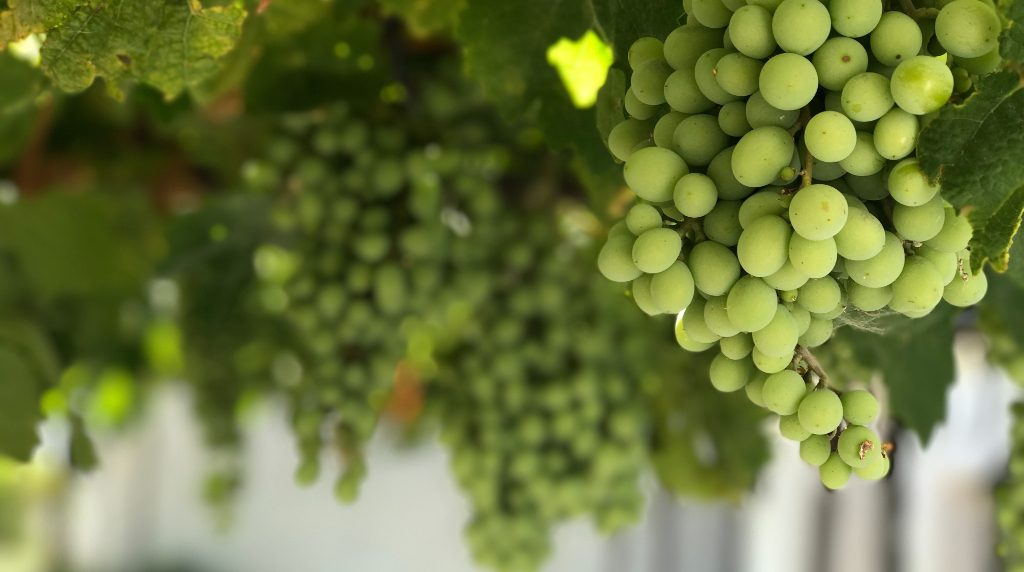When we think of Italian wines, it’s usually the bold and structured reds that come to mind; Chianti Classico, Brunello, Barolo. This makes sense, as Italy makes some of the world’s best red wines. A population can’t survive on red wine alone, especially when the summer heat starts to hit! The Piemontese certainly don’t drink Barolo with their boiled beef tongue and bagnetto verde; a crisp white wine like Gavi is a much better choice.
White wine is made in all of the country’s 20 regions, from north to south and the islands. Many locations throughout the boot are even more suited to white wine production than red. White wine making grapes thrive in sites with significant diurnal variation (a marked difference between daytime and nighttime temperature) which is characteristic of high altitude regions and coastal areas. This is because the grapes are able to fully ripen, develop aromatics and flavour and the appropriate amount of sugar- while still retaining balancing acidity. This is really important for wines, especially wines that you’ll want to enjoy with food.
There is no time like summer to explore some of Northern Italy’s wonderfully refreshing wines.
Prosecco
Northeastern Italy is home to Italy’s most famous fizz: Prosecco. The wine is made mainly from the Glera grape, the country’s 8th most planted grape overall. Up until 2009 the grape Glera was mainly referred to as Prosecco; but when some modifications to the Prosecco appellation occurred, the terminology changed to differentiate between the wine (now Prosecco) and the grape (now Glera – the Friulian synonym for the grape). At least 90% of Prosecco is produced in the province of Treviso, Veneto.
Prosecco is made in the tank method, like the majority of Italian bubblies. The tank method is widely known as the Charmat method, named after Frenchman Eugene Charmat who adopted the process on an industrial scale in the 1920s. Yet, it was a Piemontese enologist, Federicco Martinotti, who is credited for inventing the process. In Italy, some people still refer to the tank method as Metodo Martinotti.
The demand for this wine and the resulting production has grown greatly over the years so standards had to be put in place to ensure quality- highlighting the areas that are a bit more special. Prosecco di Conegliani di Valdobbiadene DOCG is considered the original production area making top shelf Prosecco. While there are other areas that also make good Prosecco, these will have the DOC designation and appellation name on their label.
I always shop for Prosecco based on producer reputation and on the recommendations of my trusted wine supplier. Prosecco is the perfect patio wine; it offers great value, flavour and approachability. It’s light enough to have at lunchtime, before dinner as an aperitif or incorporated into a cocktail. I recommend always having a few bottles on hand and pre-chilled so you’ll always be ready for happy hour. Try Masottina Prosecco Brut.
Alpine wines in Valle d’Aosta
Continuing our journey northwestward in the exploration of cool Italian wines, we find ourselves in Italy’s smallest and least populated region; the Valle d’Aosta. This is a fully Alpine region where cultivating grapes is nearly heroic. Most vineyards are on very steep south facing slopes near the valley floor through which the Dora Baltea river runs. This optimal exposure means the grapes can absorb as much sunlight as possible and ripen well. Viticulture is labour intensive and these wines are limited and justly command higher prices. The region’s soils are complex and characteristic of a mountain landscape; poor in nutrients and with little water retaining capacities. The combination of soil, site and climate gives these wines a lot of nerve and tension on the palate; what some may call minerality. There are many indigenous white grapes from this region like Petit Arvine, but Chardonnay has been grown here for a long time and is considered traditional. Try Gros Jean Petit Arvine.
The Piemonte Region
Piemonte’s white wines are easily overshadowed by all the press given to its royal family of red wines- Barbera, Barbaresco, and Barolo. Yet, the region also has many white wines deserving of our attention. One such wine is Gavi, made from the Cortese grape. Gavi, also called Gavi di Gavi, has been produced since the 17th century in the south-eastern part of Piemonte in the province of Alessandria, an area bordering the smaller coastal region of Liguria. It is a hilly area with soils that are either predominantly limestone, dry and more porous closer to the mountains producing wines with higher acidity, or richer in iron and clay in other parts making fleshier wines.
The climate is influenced by both the Alps and the Ligurian sea. The growing season is long with a high diurnal range (the difference between day and night temperatures in the vineyard) allowing grapes to mature slowly and develop aromatic complexity, while retaining acidity to produce a very elegant style of wine. Most Gavi is made in an un-oaked style and with its stony minerality can be compared to France’s Pouilly Fume or Sauvignon-Semillon blends. Try Villa Sparina Gavi.
Want to try more white wines from Italy? Check out our selection here.

